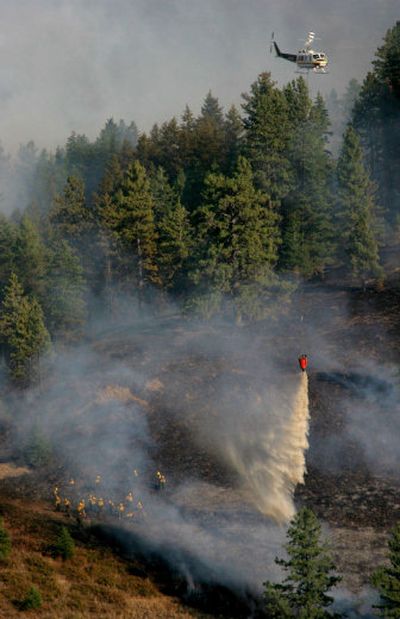Burned-timber plan opposed

A plan by the U.S. Forest Service to log 9,400 acres of timber burned last year in southeast Washington is being challenged in federal court by Northwest environmental groups, who claim the work is based on shoddy science and will further damage the charred land. The groups also contend the Forest Service project targets hundreds of healthy, old-growth trees in roadless areas.
The fire ignited last August when a tree fell on a power line. Within days, 52,000 acres and 109 houses and structures were burned in the Blue Mountain foothills near Pomeroy, Wash.
Logging some of these burned trees will help pay for restoration efforts, as well as provide logs for local mills, district ranger Monte Fujishin said in a November interview. The project was fast-tracked to ensure the timber could be cut before its value was reduced by blue-stain fungus and beetles, he added. Neither Fujishin nor officials with the Umatilla National Forest could be reached Friday.
Logging started long ago on 13,000 acres of private land burned in the fire, as well as 12,000 acres of state land, including large swaths of the William T. Wooten Wildlife Area. On Tuesday, the Forest Service planned to begin accepting bids for three timber sales within the burned areas.
Forest Service Chief Dale Bosworth signed a special order July 31 permitting logging within the salvage area.
The lawsuit, filed Aug. 15 in U.S. District Court for Eastern Washington, is asking a federal judge to halt the sales. The suit was filed by the Lands Council, of Spokane, the Sierra Club and the Oregon-based Hells Canyon Preservation Council and Natural Resources Council.
The environmental groups claim the Forest Service failed to inform the public that some of the salvage logging would be taking place in roadless forest and would require building new roads. This puts the nearby Tucannon River at risk for erosion. Threatened Snake River chinook and steelhead, as well as bull trout, spawn in the river’s clean water, according to the lawsuit. Erosion could wipe out spawning beds and make it difficult for the forest to regrow.
A major portion of the 33-page lawsuit takes issue with the Forest Service’s use of tree health determination guidelines. The agency relies on what it calls Scott guidelines to assign trees a risk of death following exposure to fire. The environmental groups enlisted scientists to review these guidelines and found them to grossly exaggerate the number of trees predicted to die.
The guidelines, for example, assume that of the trees marked as a moderate risk for dying, half would eventually die from exposure to heat and flames. But a two-year review of a tree plot burned in the nearby Malheur National Forest found that only 3 percent of the trees listed as moderate had died, according to the lawsuit.
An expert hired by the environmental groups visited the burned areas in June and determined “significant portions of the forest were live and unlikely to die anytime in the near future,” according to the lawsuit, which went on to note that the Forest Service had marked “hundreds and thousands” of large, living trees for cutting.
Along with stopping the timber sale, the groups are asking the Forest Service to subject their tree mortality guidelines to independent, peer-reviewed science.